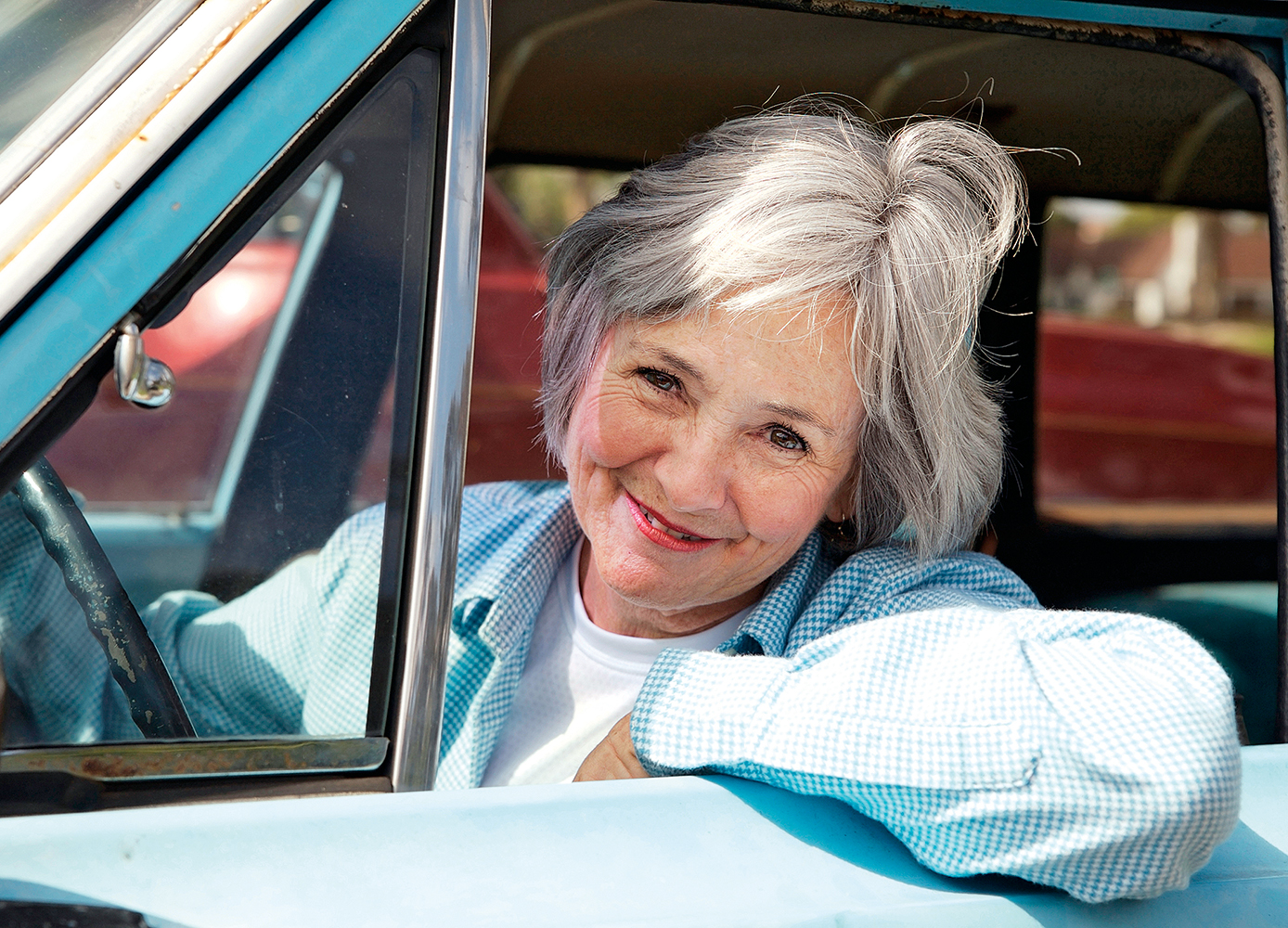Older drivers face challenges that younger drivers don’t, but that needn’t mean giving up their licence
By Marijke Vrommen Durning
Photo: iStock/SelectStock.
Do you remember that sense of accomplishment when you first received your driver’s licence? No matter what age you were, that licence represented independence.
Today’s retirees are living longer and doing more with their time, which gives them more reason to be on the road. Even the meaning of the term “older driver” has changed. In road-safety studies, it used to refer to drivers aged 65 and older; now, it designates those 75 and older.
Sylvain Gagnon, a professor at the School of Psychology at the University of Ottawa and the director of the university’s Cognitive Aging and Driving Laboratory, cites a survey from the United Kingdom that looked at drivers 75 and older. “The majority said they would be driving for at least 10 years longer. So the expectation about how long you’ll be driving has been increasing,” he says. “It’s not a surprise now to hear that people are still driving at 85, 86.”
Sixty per cent of older Canadians say driving is their most used form of transportation. It’s particularly important for people who live outside major cities, where public transportation may be limited and frequent taxis are too expensive. Given the importance and convenience of driving, no one wants to lose his or her licence, but since driving is a privilege, older drivers may have to adapt to ensure they stay safe behind the wheel.
Increased Vulnerability
Our reasons for driving change over time. At first, driving is often a fun activity, not just a way to get from Point A to Point B. “But as you get older, you have a completely different relationship with driving,” Gagnon says. “It’s really for you to get around, to maintain your autonomy. Driving is highly related to well-being.” If a couple has only one driver and his or her ability to drive is compromised, this can have a significant effect on the independence of both partners.
“People should start planning ahead in order to keep driving,” says Raynald Marchand, the general manager of programs at the Canada Safety Council (CSC). “Age 55 and beyond is when we start seeing changes in the body. We start taking medications, vision may not be what it used to be, the neck is stiffer, and so on. This doesn’t mean we have to stop driving, but these inevitable changes do force us to make adaptations if we want to stay on the road.”
It’s a myth, however, that older drivers have more accidents. That distinction belongs to younger drivers, who are involved in 50 per cent more collisions than drivers over 55, yet older people drive over three times the distance, overall. The problem with older drivers isn’t more accidents, Marchand says, it’s their vulnerability to injury. “When older people are involved in a collision, their injuries are more severe, the likelihood of fatality is higher, the length of time spent in hospital is longer, and the potential for reduced mobility as a result of the accident is much higher.”
Driving doesn’t have to be an all-or-nothing affair, says Christel Seeberger, an occupational therapist and the national CarFit coordinator for the Canadian Association of Occupational Therapists. (The CarFit program, a US initiative that came to Canada in 2014, provides clinics across the country where car experts and occupational therapists come together to assess drivers and their cars.) She recommends that people think about so-called driving retirement: “Just like work retirement, driving retirement is best managed when we plan in advance,” she says. “When we start to think about retiring, we consider where we’ll live, reduced income, or maybe downsizing. We can do the same type of advance planning when it comes to driving.”
Planning can mean driving only when you’re comfortable, avoiding stressful situations—such as driving during rush hour, at night, and on busy highways—and ensuring that your vehicle is in good condition or buying a new one altogether.
If you’re car shopping, a small car may seem like a good idea, but, Marchand says, this isn’t necessarily the case. First, there’s the practical aspect. “Older drivers often carpool, so they need something that comfortably fits up to four people,” he explains. “And small cars don’t afford as much protection in a collision. It’s better to look for a car that’s more in the mid-size range, with good visibility, as opposed to something that has big blind spots. Smaller cars, even if they have a reputation for being good in a collision, don’t have the weight needed when it comes to being hit by something bigger.”
Refresher Programs and Clinics
Most of us think we’re good drivers, but if you’ve been driving for several decades, chances are that you’ve unconsciously developed some bad habits. Refresher courses and safety clinics geared towards older adults are a great way to review safety issues and learn about any other steps you can take to stay safe.
The CarFit program, Seeberger explains, offers “a 12-point checklist of such things as where you’re sitting and your distance from the steering wheel. The workshops also teach how to properly adjust the rear-view and side mirrors. It’s not an overly complex thing—you’re in and out in 20 minutes, but it’s a nice opportunity to take a proactive approach to fitting you and your vehicle together.”
Another program aimed at helping people stay safe on the road is the 55 Alive Driver Refresher Course, which is available through the Canada Safety Council. The classroom-based program reviews driving rules and issues that older drivers may face. “The group can number up to 25 people. The goal is for people to share their experiences so others can learn from them,” says Marchand, who was involved in the program’s implementation.
Another option is practising with a driving instructor or in a simulator. In one study that Gagnon worked on, older people drove with instructors who focused on what they thought were areas that needed improvement. “Within two sessions, we saw a significant improvement in the older people’s driving,” Gagnon says.
Tips and Tricks
Practical tips can help reduce stress while driving and help you stay on the road longer.
If you wear glasses, use them, Marchand says; driving is no time to be vain. If you have a second pair of glasses you no longer use but that are only a couple of years old, leave them in the car, he adds. That way, if you’re out somewhere and you break or lose your regular glasses, you have a temporary pair at the ready. Other tips include:
• Keep your body as fit as possible. Whether it’s yoga, dancing, or a full gym workout, a healthy body and mind help keep you flexible and strong enough for the demands of driving, including turning your head quickly to check your blind spot and stepping on the brakes in an emergency.
• Get regular checkups. Aside from physical health, your vision and hearing are vital parts of safe driving. If you get new glasses, take the time to get used to them and any changes they may bring to your depth perception, Marchand says. If you wear hearing aids, ensure they’re working properly.
• Review your medications. Older drivers may take as many as five or more prescription medications, some of which can affect driving, so speak with your pharmacist about their effects and what you can do to reduce the impact they may have on your driving. “A medication and its effect on someone who is 20 and its effect on someone who is 70 can be quite different,” Seeberger says. Even a medication you’ve been taking all your life can have different effects later on.
• Keep driving. Just as you’d continue to practise a sport like golf in order to keep your game up, good driving takes practice, too, Gagnon says. Spouses should share the driving duties, Marchand says, as long as both have a driver’s licence, “because if the primary driver doesn’t feel comfortable or is feeling ill, the other spouse can drive.” This also helps to ensure that a spouse is not left driverless and thus helpless upon the death of his or her partner.
• Focus on your driving. While we constantly warn teens to limit distractions such as texting, older drivers must also limit distractions, such as chatting with passengers, listening to music, and drinking coffee. Concentrate on the road, and if you have passengers, explain to them that you need to focus.
• Tailor your car to your driving needs. If you share your car with your spouse or anyone else, ensure it’s fit for you as a driver before you begin each trip. “Is the steering wheel positioned correctly? Is the headrest at the proper height? Most people don’t adjust the headrest, but it’s an incredibly important thing for whiplash prevention,” Seeberger says.
For most of us, driving into our later retirement years is possible. We may need to adjust how and when we get behind the wheel, but these modifications will help keep us safe—and help us keep our independence on the road for years to come.





